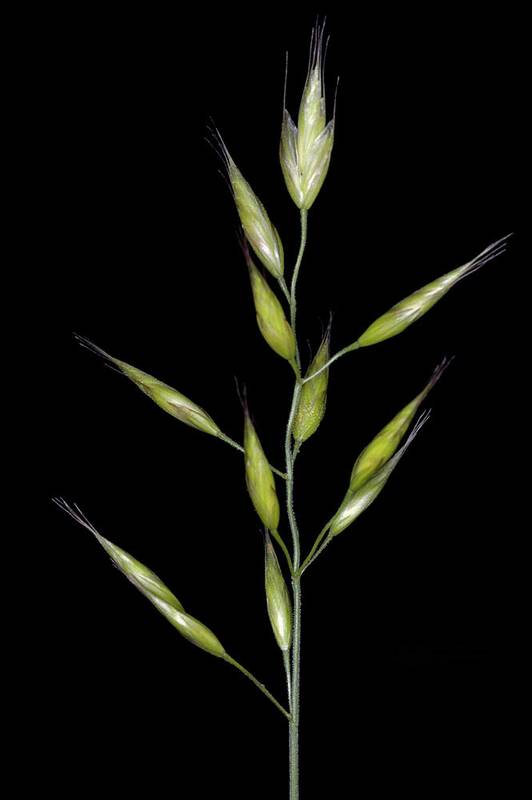Bromus hordeaceus
Bromus pacificus
soft chess
Pacific brome
Sheaths closed;
ligules 0.5-1 mm. long, hairy;
blades flat, 1.5-4 mm. broad.
Inflorescence an erect, narrow, crowded panicle 3-10 cm. long, the spikelets exceeding the pedicles;
spikelets 5- to 7-flowered, 1-2 cm. long; first glume 4-6 mm. long, lanceolate, the second slightly longer and wider;
lemmas 6.5-8.5 mm. long, the area between the nerves depressed and concave;
lemmas with straight awns 6-10 mm. long from a bifid apex.
Bromus hordeaceus
Bromus pacificus
Occurring on both sides of the Cascades crest in Washington; Alaska to Baja California, east to Idaho and Montana.
Occurring west of the Cascades crest in Washington; Alaska to Oregon.
- Local floras:
BC,
CA,
OR,
WA
- Local Web sites:
CalFlora,
CalPhotos,
Flora NW,
PNW Herbaria
WildflowerSearch
iNaturalist (observations)
USDA Plants Database
- LBJ Wildflower Center
- SEINet
- Plants of the World Online
- Encyclopedia of Life
- Wikipedia
- Google Image Search
- Local floras:
BC,
OR,
WA
- Local Web sites:
Flora NW,
PNW Herbaria
WildflowerSearch
iNaturalist (observations)
USDA Plants Database
- LBJ Wildflower Center
- SEINet
- Plants of the World Online
- Encyclopedia of Life
- Wikipedia
- Google Image Search


